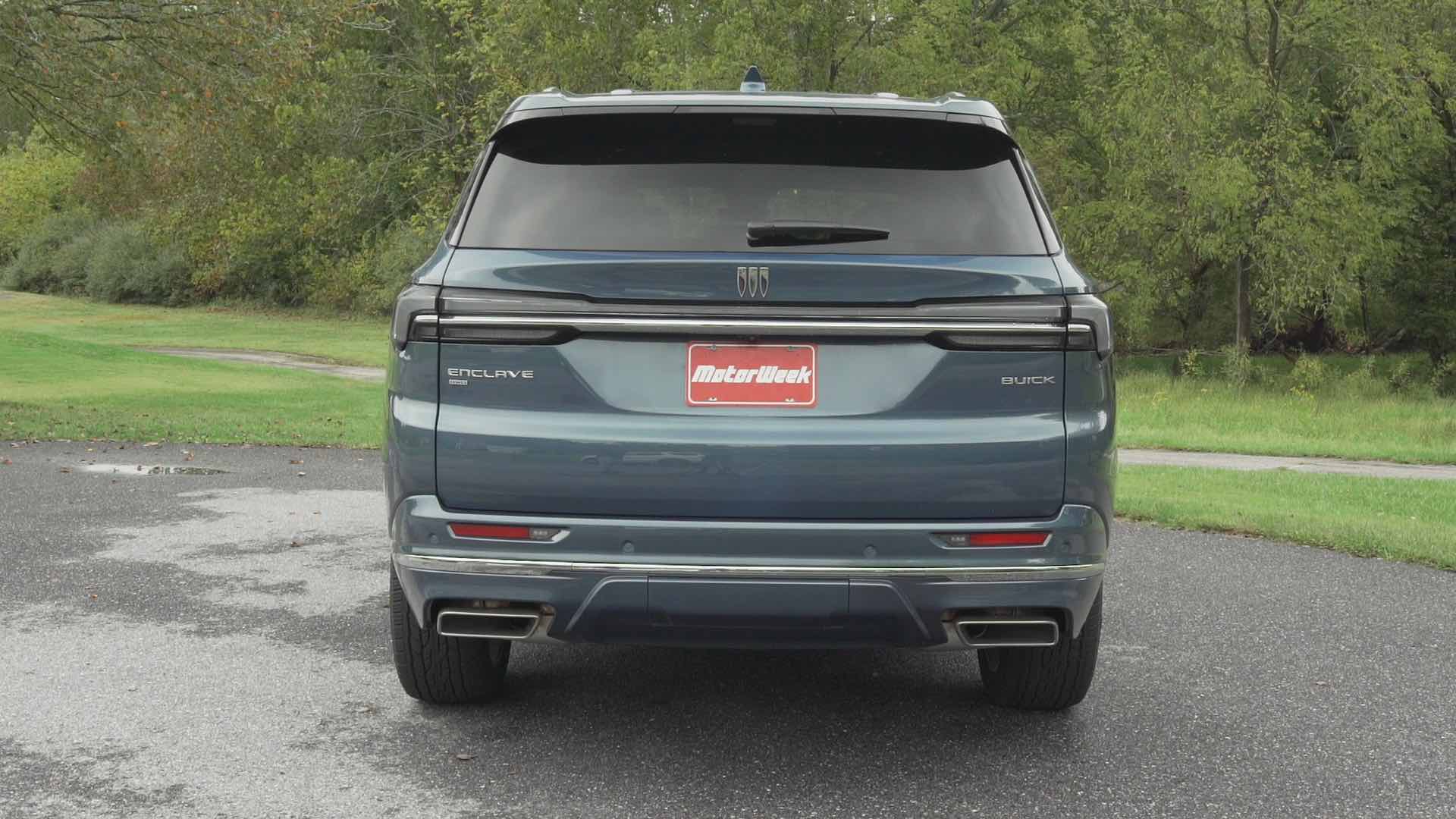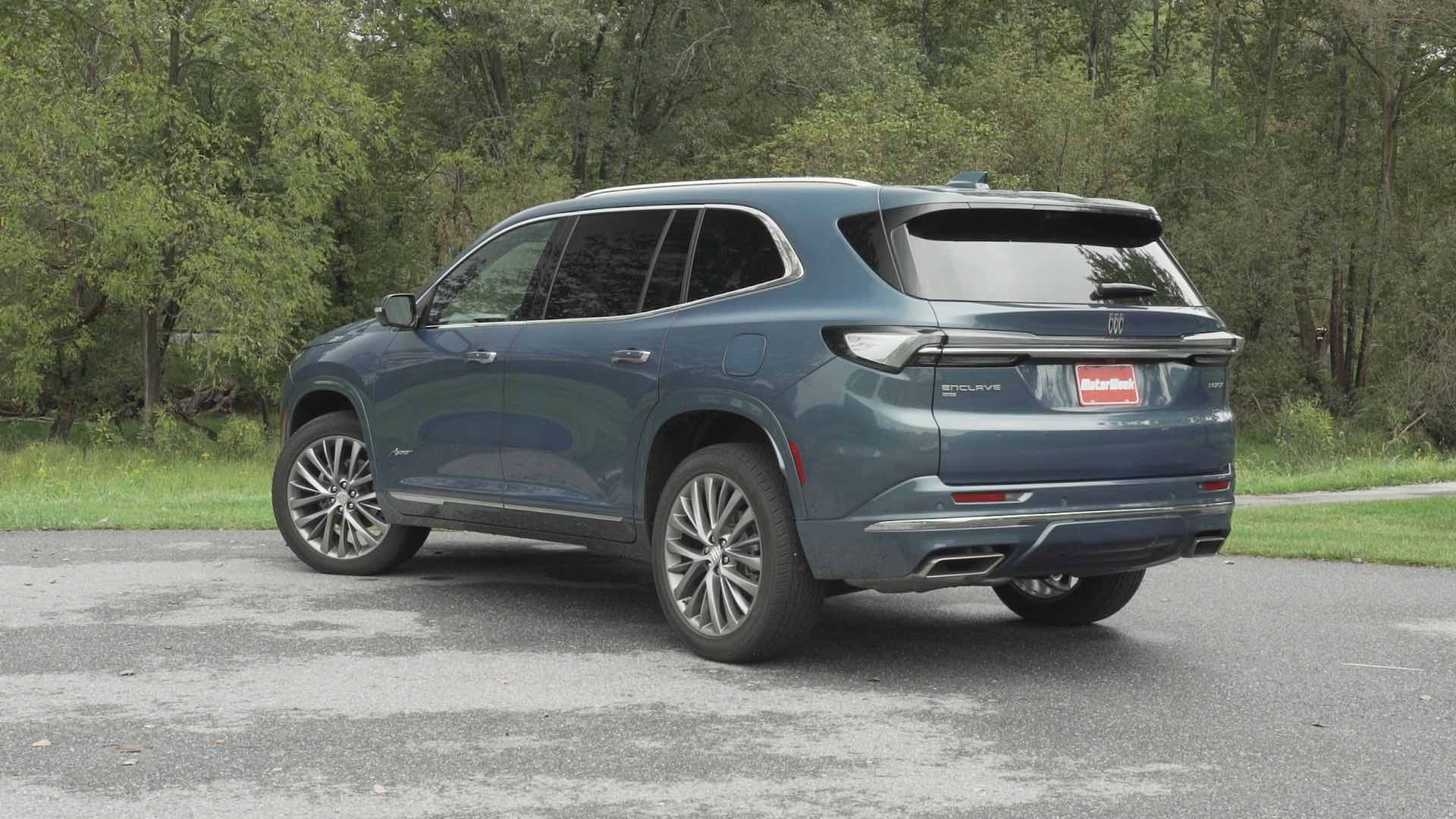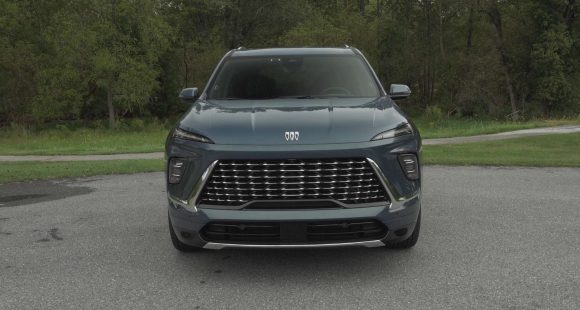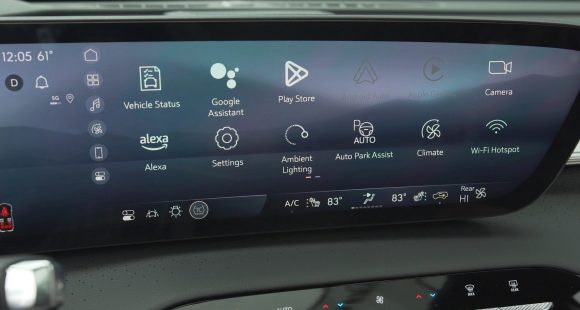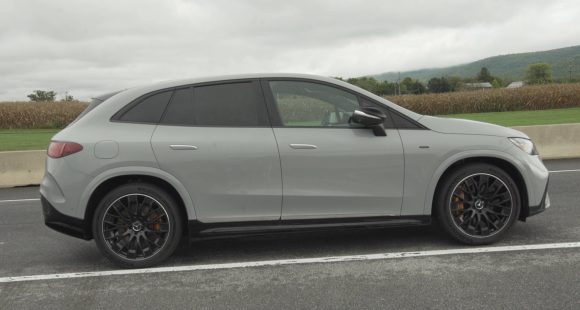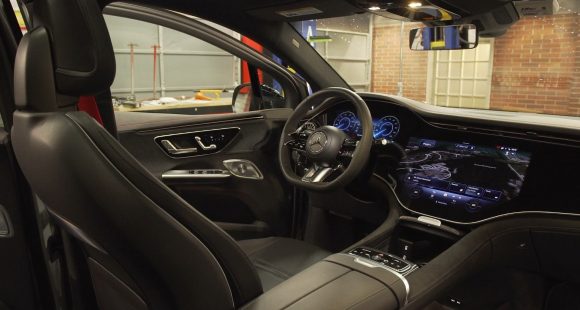2015 Ford Mustang
50 years have passed since the Ford Mustang entered the corral, creating the iconic pony car segment. While a lot has changed since then, the Mustang really hasn’t changed that much at all. But as Ford launches the all-new, 2015, 6th generation Mustang, it does so with some of the biggest changes ever. So, saddle up, as the legend of Mustang continues anew.
The 2015 Ford Mustang is arriving at just the right time. Car sales are back up to pre-recession levels, and the original pony car has been facing some the toughest competition ever from the re-launched Chevrolet Camaro and Dodge Challenger. In addition to that, this will be the first Mustang with true international sales intentions.
Powering this mission are three engines, each with more than 300-horsepower. The 5.0-liter V8 is back of course, now with more muscle…435–horsepower…thanks to tweaked cylinder heads and intake. The 3.7-liter V6 also returns; with its intake redesigned, due to a lower hood. It results in a loss of horsepower, now at 300 even.
Between the two, at 310–horsepower, is a new 2.3-liter EcoBoost turbo I4 with 320 lb-ft. of torque. It’s not the first turbo-4 under a Mustang hood, that would be the SVO of ’84 to ’86, but it is the first Ford to use a twin-scroll unit.
 Transmissions hang with tradition, a 6-speed manual or 6-speed automatic for all engines.
Transmissions hang with tradition, a 6-speed manual or 6-speed automatic for all engines.
Styling, always a Mustang fan hot button, is less altered than originally feared. Retro-reinvented, the Mustang 6.0 is lower, wider, and even with a familiar long hood profile, far more aggressive. Wheelbase stays at 107.1-inches and overall length is shortened by 2/10ths of an inch.
The blunt nose and hallmark grille opening are tweaked to fit the rest of the Ford brand. There’s new HID headlights, and a fresh take on LED signature lighting.
There’s clearly more of a fastback shape towards the backend, and the new rear fascia is “euro diffuser” in design. The glossy tail light panel features updated horses for 4 & 6 cylinders, and a GT badge for V8s. The 3-bar tail lights return, but look more 3-dimensional. Turn signals are still sequential.
17-inch wheels are standard, GTs get 18’s; 19’s are optional on any. Brembo brakes come with GT or EcoBoost Performance Packages.
A classic appearance continues inside too, with the dual hump dash. But, gauges, the center stack, and electronic aids are much more in the now. You’ll also find better materials, more knee space thanks to a slimmer lower dash, a passenger’s side knee airbag, and there’s even more room in the glove box.
Toggle switches and a start button are brought into the mix, and cup holders have been shifted over providing freer access to the shifter. Even base models get keyless entry and a back-up camera.
 Selectable drive modes are new, adjusting steering effort, engine and transmission response, as well as stability control intervention for normal, snow/wet, sport, and track conditions. And of course there are track apps, accessible through the gauge panel information screen, as is Launch Control.
Selectable drive modes are new, adjusting steering effort, engine and transmission response, as well as stability control intervention for normal, snow/wet, sport, and track conditions. And of course there are track apps, accessible through the gauge panel information screen, as is Launch Control.
The steering wheel is smaller in diameter, but gets lots of new switchgear added to it. The trunk opening is larger, and the amount of space behind it has grown a tiny bit, now at 13.5 cubic-ft.
Nostalgia aside, we found the new-gen ‘stang is now much more about driving with the much anticipated independent rear suspension now standard on all models. You don’t really notice it in sedate daily driving, however. But, dive deep into a corner, start feeding in some power, and the car hunkers down, propelling you out like never before.
Should you encounter a bump mid-way through that corner, it becomes even more obvious; as the rear end is a whole lot less busy, happy to follow in line instead of trying to overtake you every chance it gets. Such a big change out back forced Ford to extensively rework the front suspension as well. That’s a win-win too.
As for how the Mustang feels with 4-cylinder power: it feels just fine. There’s good response, great mid-range torque, and even some respectable sound, though not at full song.
 Nothing sounds like a V8 of course and the GT is still where it’s at if you’re looking for Mustang bragging rights. Manual 0 to 60 nudges four and a half seconds. Drag racers, or the burnout challenged, will also be happy to hear that all GT’s come standard with a line lock.
Nothing sounds like a V8 of course and the GT is still where it’s at if you’re looking for Mustang bragging rights. Manual 0 to 60 nudges four and a half seconds. Drag racers, or the burnout challenged, will also be happy to hear that all GT’s come standard with a line lock.
Mustang base prices are up slightly; $24,425 for the V6. That’s still less than a base Camaro or Challenger. EcoBoost I4 is just above that at $25,995, while V8 GTs start at $32,925.
We think the 2015 Ford Mustang, while a little less nostalgic, is much farther reaching, even without its international sales intentions. It is clearly a much better sporty coupe than ever before, and not just in the margins. And that progression will ensure that the Mustang legend will not only live on, but continue to lead.
Specifications
- Engine: 5.0 liter V8 / 3.7 liter V6 / 2.3 liter
- Horsepower: 435 / 300 / 310
- Torque: 400 lb-ft./ --- / 320 lb-ft.
2025 Buick Enclave
Buick’s Biggest Utility Gets More Premium Look, Less Premium Powertrain
Buick is now an all SUV brand with the three-row Enclave sitting at the top of their lineup. And for this all-new third generation, it looks like Buick has finally given it the true flagship treatment it deserves. Reason enough for us to see what else new this posh performer has in store.
Don’t think of this 2025 Buick Enclave as just a new third generation of Buick’s largest three-row SUV, but more of a total reboot for a luxury segment pioneer. Part of that reinvention is swapping out the 3.6-liter naturally aspirated V6 engine, that has been the heart of this large crossover since it arrived on the scene for 2008, for a new 2.5-liter turbocharged four-cylinder.
Though using two fewer cylinders, it rates 18 more horsepower at 328. The gain in torque is even greater, climbing from 266 to 326 lb-ft.
Power from a start and when tooling around town feels pretty good, but you do notice that engine working hard under the hood; there is more engine noise and it’s not as smooth as many competitors who have also made the switch to turbo-four power. Max towing rating remains at 5,000 lbs. The new standard automatic transmission loses a gear, dropping from nine to eight, a simplifying move we applaud. All-wheel drive is a $2,000 option with all trims.
The Enclave rides on the same front-wheel-drive based chassis that supports the Chevrolet Traverse and GMC Acadia. It remains the most luxurious of the three, though all have made big upward strides. And that luxurious feel is very evident inside where things appear special without flaunting it. Materials are vastly improved over the last gen, especially in top Avenir trim which is the choice for most Enclave buyers.
Front seats are very comfy, well suited for long days of highway travel. It’s hard to miss the 30-inch ultra-wide display, similar to Cadillac’s. It is big, but not intimidating as operation is very logical and you can easily configure things as you want them, including bringing the nav screen up full in front of the driver.
Front seats are very comfy, well suited for long days of highway travel.
Between the seats is a very substantial console with lots of storage space and standard wireless phone charging. There is definitely room for full-size adults in all three rows of seating. Big, plush captain’s chairs with all trims for the second row; and a less plush but still comfortable three-place third row.
GM’s Super Cruise has now made it to Buick’s lineup, available as a standalone package for any trim. It remains a favorite of ours for hands-off highway cruising. Despite feeling adequately powered on the street, the Enclave’s turbo-four felt a little out of its element at our Mason Dixon Dragway test track. There was very little jump off the line, just a slow wind up to 60 of 8.0 seconds, with the quarter-mile completed in 16.0 seconds flat at 92 mph.
We could really feel the Enclave’s weight in our handling course, about 150-lbs. over last year, even with less motor under the hood. But there was very little body roll, and no excessive oversteer or understeer. In panic braking runs, there was good feel through the pedal, and solid stops from 60 averaging a fine 111 feet.
To all of our eyes, the Enclave is bigger yet much better looking than before. Now more sophisticated using Buick’s PURE philosophy which emphasizes Purity in design, Unexpected details, Refined finishes, and Exceptional execution.
With all-wheel drive, Government Fuel Economy Ratings are 19 City, 24 Highway, and 21 Combined; we managed a great 24.9 mpg of Regular. That’s a slightly below average Energy Impact Score, consuming 14.2 barrels of oil yearly, with 7.0 tons of CO2 emissions.
No more Essence or Premium Enclaves, as the new gen brings new trim names along with it; the base option now being Preferred which starts at $46,395, and unless you choose white, you’ll be paying extra for all exterior colors. Just a short step from there to the Sport Touring for $48,795, and then a much bigger bounce up to Avenir at $59,395.
With so many big utes now aimed at luxury and near luxury buyers, it’s getting harder and harder for Buick to stand out. Being an all-utility brand, with one of the freshest lineups in the industry, will no doubt help. The 2025 Buick Enclave is a very stylish, well-equipped, well executed large three-row crossover that’s priced right.
Specifications
As Tested
- Engine: 2.5-liter turbo-4
- Transmission: 8-speed automatic
- Horsepower: 328
- Torque: 326 lb-ft.
- EPA: 19 City | 24 Highway | 21 Combined
- 0-60 mph: 8.0 seconds
- 1/4 Mile: 16.0 seconds at 92 mph
- Braking, 60-0 (avg.): 111 feet
- MW Fuel Economy: 24.9 mpg (Regular)
2024 Mercedes-AMG EQE
AMG EQE SUV OMG TSNF YOLO LOL
We all know that cranking up the performance in a battery-electric vehicle is a much different and much simpler process than the methods used over the last 100 years of internal-combustion powertrains. So, let’s see how AMG has adapted to this brave and very fast new world with the Mercedes-AMG EQE SUV.
This 2024 Mercedes-AMG EQE is the first all-electric performance SUV from the motoring masterminds at AMG. Starting with the same EQ platform that underpins the brand’s S- and E-class based all-electric sedans and utilities, AMG replaces the EQE 500 4MATIC SUV’s motors with AMG specific units both up front and in back. These specially built motors have unique windings, adapted inverters, and upgraded cooling; all so more current can flow, producing a new total of 617 horsepower and 701 lb-ft of torque.
While the midsize EQE SUV doesn’t feel overly large to drive, it does have an incredibly solid, almost tank-like presence to it, weighing in at just shy of 6,000 lbs. Yet, standard rear-axle steering helps it behave quite nimbly, and it accelerates like a vehicle half that weight, pushing you back in the seat with authority whenever you go all in on the accelerator pedal. An extended period of Mid-Atlantic rain kept us from getting track numbers, but Mercedes claims 0-60 in 3.4 seconds. We’d say that’s conservative given Race Start with Boost Function unlocks an additional 60 horsepower.
Likewise, as in previous Mercedes EVs we’ve tested, it overachieved when it came to battery range as well. With the official rating of the AMG EQE SUV at 235 miles, we plotted a 200-mile road trip, and still had 21% of battery remaining at the end of it, putting our range estimate closer to 254 miles. Max DC fast charging for the 90.6-kWh battery, which is the same battery used in the EQE 500, is perhaps not as high-performance as the rest of the vehicle. At 170 kW, it takes about 15 minutes to add 100 miles of range. Though when driving, the regen braking setup can feed power back at a rate of 260 kW. Our tester’s optional ceramic brakes were plenty strong, if a little touchy around town. There’s also active braking that likes to initiate regen before you actually touch the pedal when you’re coming up on another vehicle or approaching an intersection.
Nobody does interiors like Mercedes-Benz, and we’re not just talking about the luxurious quality of the leather and carbon fiber materials. There’s the wow factor of the dash-wide Hyperscreen, and cool aspects too, such as the turbine-like air vents. That’s before you even get to looking around at the AMG specifics like the Performance Steering Wheel, Dynamic Select Drive Modes, and even the unique AMG Sound Experience coming through the Dolby Atmos surround sound system with speakers seemingly everywhere.
It’s not all glitz and glamour though, as there are multiple thoughtful storage locations throughout the cabin, and good cargo hauling abilities too. The 18.4 cu-ft of space in back and max capacity of 59.2 cu-ft with rear seatbacks folded might just be the ticket to convincing your significant other into letting you make this oh so sensible purchase. Rear seat passengers of this five-seater will appreciate their own luxurious space, with comfortable seating, adequate leg and headroom, and multiple charging ports.
There’s nothing that screams high-performance on the outside of this EQE SUV, as AMG details are mostly subtle, though stacking both of the available AMG Night Packages adds lots of gloss black trim and dark chrome accents. There are three different 21-inch wheel patterns to choose from, as well as available 22s.
Most of the AMG goodness lies deep within, like performance-tuned fully variable 4MATIC+ all-wheel drive that adjusts torque distribution 160 times per second based on drive mode and chassis sensor info. Likewise, AMG Ride Control+ air suspension with adaptive damping and active roll stabilization is constantly monitoring road and driving conditions, along with driver input, adjusting the suspension accordingly, and delivering vastly different driving experiences spread across multiple drive settings from Comfort to Sport+.
Using 46 kWh of electricity per 100 miles, the AMG EQE SUV earns a fair efficiency rating. Pricing starts at $110,750; certainly not out of line for any high-performance vehicle these days, much less one with a Mercedes Star plus an AMG badge.
You could argue that when Mercedes-Benz made the EQ leap into full battery-electric vehicles, they prioritized precision over passion. Well, there’s a healthy dose of both here in this 2024 Mercedes-AMG EQE SUV. Now, we may just be a little lightheaded from experiencing all of the performance that’s packed into this midsize utility, but this is easily our favorite Mercedes EV we’ve driven yet; and that kind of makes sense considering AMG had a big hand in creating it.
Specifications
As Tested
- Motor Setup: Dual Motor
- Battery Size: 90.6-kWh
- Horsepower: 617
- Torque: 701 lb-ft
- EPA Range: 235 miles
- MW Test Loop: ~254 miles
- Peak Charging Rate: 170-kW











